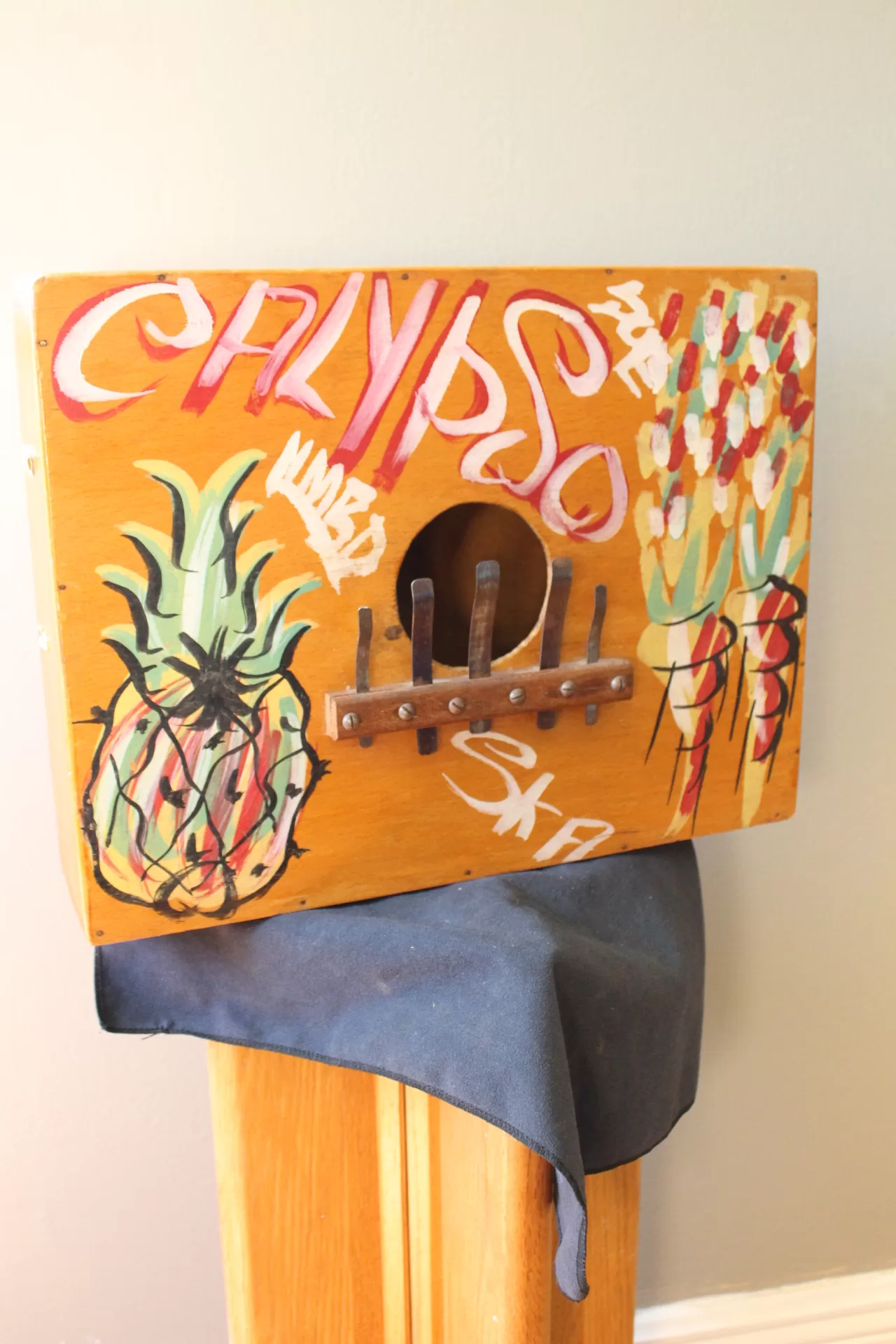The Rumba Box, also known as the MarÃmbula or Marimbola, is a traditional percussion instrument originating from Cuba and also found in other parts of the Caribbean and Latin America. Here are its key features and characteristics:
Construction:
- The Rumba Box is essentially a large wooden box or resonator chamber.
- It has metal or wooden tongues (similar to keys) mounted over the top of the box.
- These tongues are usually of varying lengths and thicknesses, each producing a different pitch when plucked or struck.
Playing Technique:
- To play the Rumba Box, the musician typically plucks or strikes the metal or wooden tongues with their fingers or with mallets.
- Different tongues produce different notes, allowing for the creation of melodies and rhythms.
- The resonance of the instrument is enhanced by the hollow body of the box, which acts as a natural amplifier.
Sound:
- The sound of the Rumba Box is characterized by its deep, resonant tones produced by the vibrating metal or wooden tongues.
- It provides a rhythmic and melodic foundation in traditional Afro-Cuban music genres such as rumba, son, and mambo.
- The instrument’s sound can vary in timbre and intensity depending on the construction and materials used.
Cultural Significance:
- The Rumba Box holds cultural and historical significance in Afro-Cuban and Caribbean music traditions.
- It is often used in folkloric music and dance ensembles, accompanying rituals, celebrations, and social gatherings.
- The instrument’s rhythmic patterns and melodies contribute to the vibrant and diverse musical landscape of the region.
Overall, the Rumba Box or MarÃmbula is a distinctive percussion instrument that adds depth and character to traditional Afro-Cuban and Caribbean music, known for its rich, resonant sound and cultural significance in the musical heritage of the region.
